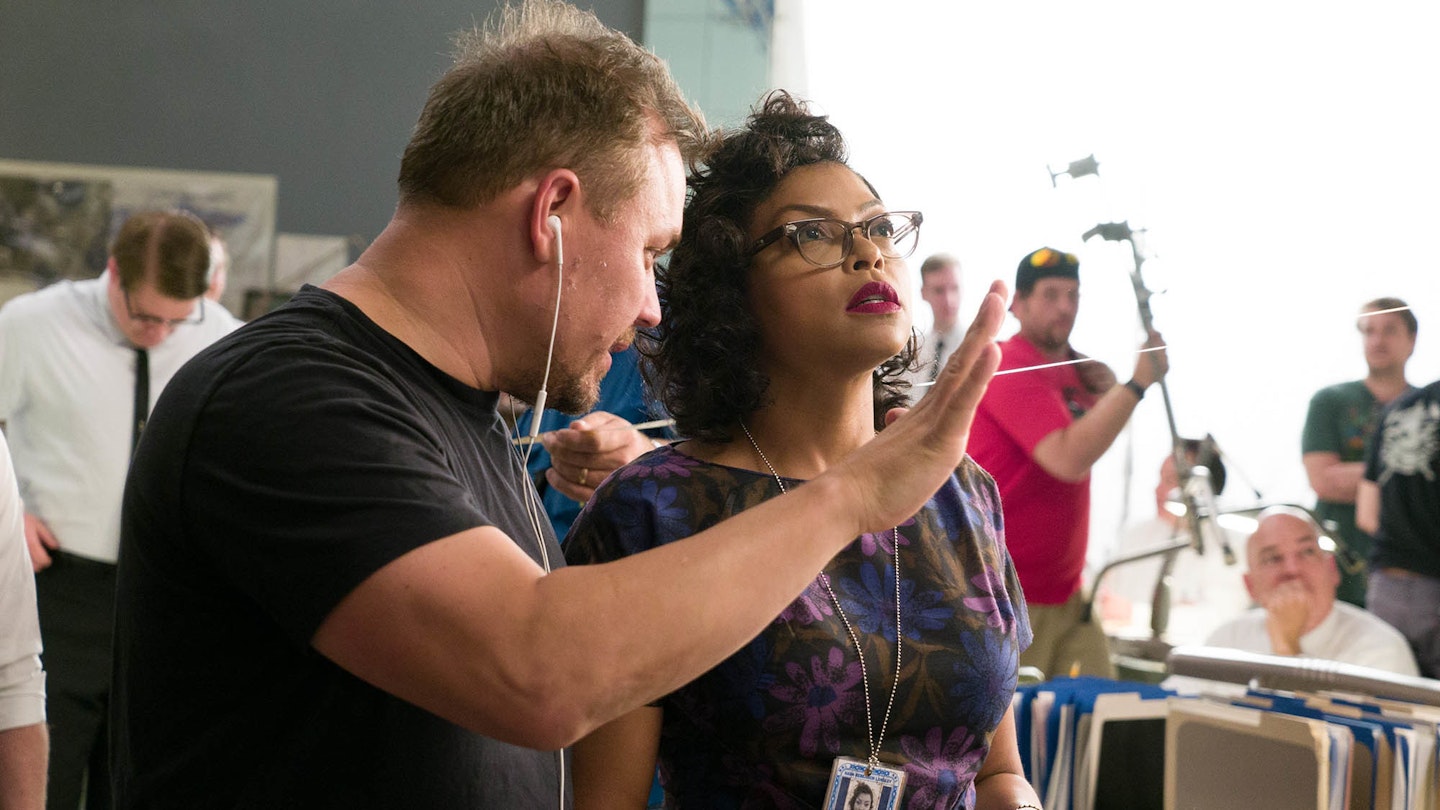His first feature film was charming Bill Murray drama St. Vincent. For his sophomore effort, Theodore Melfi aimed a little higher — in fact, he aimed at outer space. Hidden Figures is the tale of three African-American maths geniuses (played by Taraji P. Henson, Octavia Spencer and Janelle Monáe) and their struggles to make a mark at NASA in the early 1960s. With the film garnering big box-office in the States and a Best Picture Oscar nomination, we sat down with Melfi to talk gum-chewing, Jim Parson and how the movie was influenced by the Avengers…
What was the process of putting together your lead trio?
I redrafted the script, and the moment I started writing, I said, “Taraji Henson.” Because I had been talking to her for a role in St. Vincent: Bill Murray’s girlfriend, the prostitute. The role Naomi Watts ended up playing. So I’ve been wanting to work with her for years. And then Octavia got hold of the first draft of the script and said, “I want to be involved, no matter what.” Janelle was the last. Because we wanted to find someone new and fresh for that role. She came in and auditioned and they just had such a great energy together.

Each of their characters is very different. Did you work hard to figure out the dynamics?
I was always thinking about them as superheroes. Every superhero has a very distinct skill, right? So Taraji’s skill was math. Octavia was the mechanic. And Janelle was the firecracker. The one who doesn’t tolerate injustice, doesn’t keep her mouth closed and is constantly speaking up for herself.
Taking on a film about mathematics could be daunting for a director. How are your maths skills?
I was a good student. I started college at 16 years old and did okay. But I learned a lot more math for this. I researched and researched and researched. I learned everything there is to know about that space programme. We had two NASA consultants, so I dug into trajectories and orbital flight and elliptical orbit versus parabolic orbit. The thing I spent the most time trying to understand was the puzzle they’re working on in the movie: they could get a guy into orbit, but they couldn’t figure out how to get him back. The answer is pretty complex.
There’s a scene in the movie involving a blackboard which you shoot like an action sequence...
That’s what we were going for. I think math is exciting, you know. And the stuff they were pulling off at that time was crazy. There’s more technology in a toaster today than what they had to launch that rocket. So it all had to be done by hand. We tried to create a visual language quickly in the film. There are action sequences in the third act, where my experience shooting commercials came in useful. It’s a low-budget movie, so the rocket stuff is a mix of stock footage, CGI and stuff we shot.
As Space Task Group director Al Harrison, Kevin Costner is constantly, furiously chewing gum. Whose idea was that?
Well, it was a practical thing. In real life, when we looked at reference pictures, every single person in those rooms had a cigarette in their mouth. But I don’t want to to put smoking in a movie unless I absolutely have to. Also, it makes the movie R-rated right away. And this movie being rated R would be a disservice, because you really want teenage kids and pre-teens and kids to see it. So Kevin said, “Alright, whatever, I’m gonna chew gum all the time.” If you watch the movie, he chews his gum on the exact beat of certain words. In every take he did, he hit the mark with his gum-chewing. He’s a technical genius.
You cast Jim Parsons from The Big Bang Theory as a mathematical wizard. Was that a no-brainer?
It’s a no-brainer in the sense that you accept him as being a math genius. It’s a big-brainer in the sense that you have to now accept him as a racist. And sexist. Which Jim is definitely not. He and I are friends from doing lots of commercials together for Intel. He had a hard time being that aggressive and abrasive with Taraji. But I find that a great philosophy for casting is if you have an unlikeable character, cast an actor that is immensely likeable. That way the audience struggles with it. It gives the role a sense of complexity. That’s why I cast Kirsten Dunst too. When their characters make small incremental changes, you have an uplifting feeling.
Hidden Figures is in cinemas from Friday 17 February.
